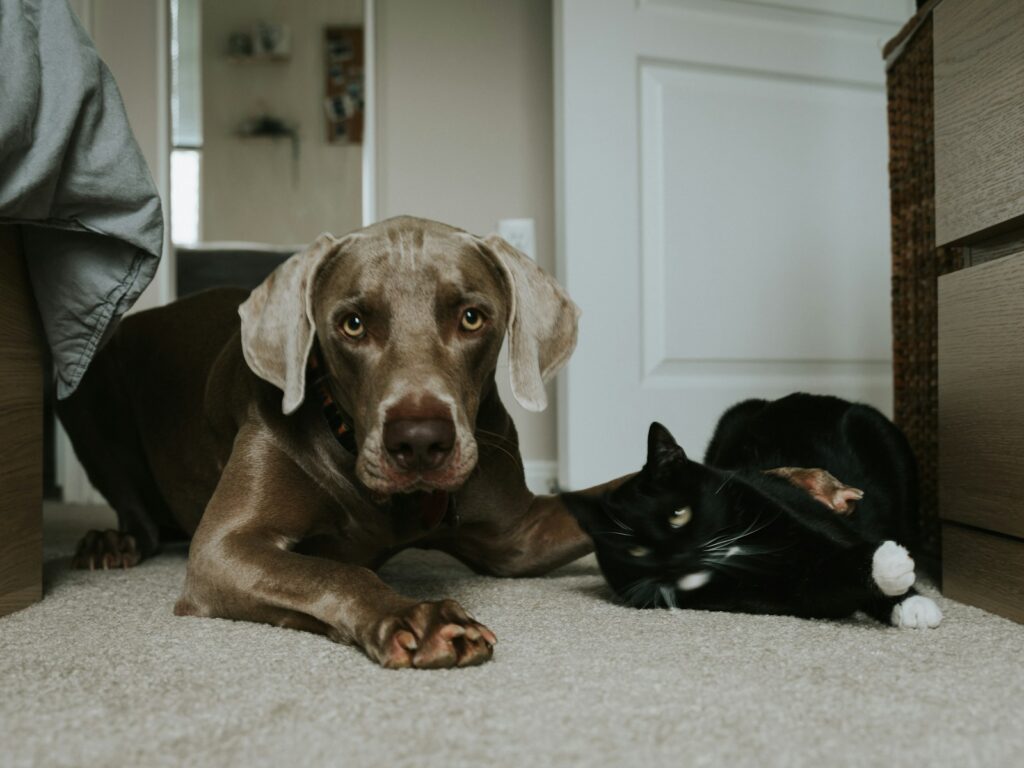Leaving your pet behind while you’re away can be anxiety-inducing, but ensuring their wellbeing doesn’t have to be. Whether you’re off for just a short getaway or an extended trip, it’s essential to prepare to make sure your furry friend remains healthy and happy. From securing adequate care to maintaining their routine, small steps can have a significant impact.
“The bond with a true dog is as lasting as the ties of this earth will ever be.” – Konrad Lorenz
Here are a few key strategies to consider when planning for your pet’s care in your absence. These tips will help you create a nurturing and safe environment, giving you peace of mind while you’re away:
- Find a Reliable Sitter: Whether it’s a professional sitter or a trusted friend, choosing the right person is crucial.
- Maintain a Routine: Pets thrive on routine. Ensure the same feeding, sleeping, and exercise schedules are followed.
- Stock Up on Supplies: Make sure your sitter has access to enough food, medication, and any other necessities your pet might need.
- Provide Emergency Contacts: Leave a list of emergency contacts, including your veterinarian’s information and a nearby family member.
What are the best pet boarding options?
One of the most popular pet boarding options is traditional kennels. These facilities offer a safe and secure environment for pets, providing individual spaces for each animal. Many kennels also offer additional services such as grooming, exercise, and socialization with other pets. It’s important to visit the kennel beforehand to ensure it meets your standards for cleanliness and care. Pet hotels are another excellent option for boarding your pet. These establishments often provide more luxurious accommodations, including private rooms, comfortable bedding, and even television for pets. Pet hotels typically offer a range of services such as playtime, grooming, and personalized attention. They are ideal for pet owners looking for a more upscale boarding experience.
In-home pet boarding is a great alternative for pets who may not do well in a traditional kennel or pet hotel environment. This option involves leaving your pet in the care of a professional pet sitter who welcomes pets into their own home. This setup can provide a more comfortable and less stressful experience for your pet, as they will be in a home-like environment with more personalized attention. For those who prefer their pets to stay in their own home, hiring a pet sitter is a viable option. A pet sitter will come to your home to care for your pet, ensuring they remain in a familiar environment. This can be particularly beneficial for pets with anxiety or special needs. Pet sitters can offer various services, including feeding, walking, playtime, and administering medication.
Veterinary clinics often provide boarding services, which can be an excellent choice for pets with medical needs. Boarding your pet at a veterinary clinic ensures they have access to professional medical care if needed. These facilities are typically equipped to handle pets with health issues and can provide a high level of care and monitoring. Some pet owners opt for pet daycare centers that also offer overnight boarding. These centers focus on providing a stimulating environment with plenty of social interaction and activities during the day, followed by secure and comfortable sleeping arrangements at night. This option is great for pets that enjoy being active and socializing with other animals.
What are the essential items pets need when owners are away?
One of the essential items pets need when owners are away is a sufficient supply of food and water. Automatic feeders and water dispensers can help ensure that your pet has access to fresh food and water throughout the day, reducing the risk of them running out or overeating due to boredom. Comfortable bedding is crucial for your pet’s well-being. A cozy bed or blanket can provide a sense of security and comfort, helping them feel more at ease in your absence. Make sure the bedding is placed in a familiar and safe location where your pet likes to rest.
Interactive toys and puzzles can keep your pet mentally stimulated and physically active while you’re away. These items can help prevent boredom and reduce anxiety by engaging your pet’s natural instincts to play and explore. Consider rotating toys to keep things interesting. A pet camera can be a valuable tool for monitoring your pet’s behavior and well-being when you’re not home. Many pet cameras come with two-way audio, allowing you to talk to your pet and provide reassurance. Some models even have treat dispensers to reward good behavior.
Identification tags and microchips are essential for your pet’s safety. In case your pet gets lost while you’re away, having up-to-date identification can significantly increase the chances of a safe return. Ensure that your contact information is current and that the microchip is registered with a reliable service. A pet first aid kit is an important item to have on hand in case of emergencies. The kit should include basic medical supplies such as bandages, antiseptic wipes, tweezers, and any medications your pet may need. Familiarize yourself with basic first aid procedures for pets.
| Essential Item | Description | Reason |
|---|---|---|
| Identification Tags | Tags with pet’s name and your contact information | Facilitates quick return if your pet gets lost |
| Microchips | Tiny chip implanted under the pet’s skin | Permanent identification that can’t be lost or removed |
| Pet First Aid Kit | Contains bandages, antiseptic wipes, tweezers, and medications | Allows immediate care for minor injuries and emergencies |
| Current Photos | Recent pictures of your pet from different angles | Helps in creating lost pet posters and confirming identity |
How can pet sitters ensure a pet’s well-being?
Pet sitters can ensure a pet’s well-being by maintaining a consistent routine. Pets thrive on routine, and sticking to their regular schedule for feeding, walking, and playtime can help reduce stress and anxiety while their owners are away. Communication with the pet owner is crucial. Pet sitters should have a detailed conversation with the owner about the pet’s habits, preferences, medical history, and any special needs. This information will help the sitter provide the best care possible.
Providing mental and physical stimulation is essential. Engaging pets in activities that challenge their minds and bodies can prevent boredom and destructive behavior. This can include interactive toys, puzzle feeders, and regular exercise. Monitoring the pet’s health is a key responsibility. Pet sitters should be observant and look for any signs of illness or distress. Knowing the pet’s normal behavior and physical condition will help in identifying any issues early on.
Creating a safe environment is fundamental. Pet sitters should ensure that the living space is free from hazards, such as toxic plants, small objects that can be swallowed, and unsecured areas where the pet might escape. Building a bond with the pet can greatly enhance their wellbeing. Spending quality time with the pet, offering affection, and being patient can help the pet feel more comfortable and secure in the sitter’s presence. Having a contingency plan for emergencies is vital. Pet sitters should know the location of the nearest veterinary clinic, have emergency contact numbers, and be familiar with basic first aid procedures for pets.
What are common signs of pet stress when owners are absent?
One common sign of pet stress when owners are absent is changes in eating habits. Pets may either lose their appetite or overeat due to anxiety. This can lead to noticeable weight loss or gain, which can be detrimental to their health. Another indicator of stress in pets is destructive behavior. Dogs might chew on furniture, shoes, or other household items, while cats may scratch excessively on furniture or other surfaces. This behavior is often a coping mechanism for their anxiety. Excessive vocalization is also a common sign of stress. Dogs may bark, howl, or whine more than usual, and cats might meow incessantly. This vocalization is their way of expressing discomfort and seeking attention.
Pets may also exhibit changes in their bathroom habits. Dogs might have accidents inside the house even if they are house-trained, and cats might urinate or defecate outside their litter box. This can be a sign of anxiety or a disruption in their routine. Another sign of stress is excessive grooming or self-mutilation. Cats may over-groom to the point of creating bald spots, and dogs might lick or chew their paws excessively. This behavior can lead to skin infections or other health issues. Some pets may become withdrawn or exhibit changes in their social behavior. Dogs might hide or avoid interaction with people and other animals, while cats may become more aloof or aggressive. This change in behavior can indicate that they are feeling insecure or anxious.
Restlessness and hyperactivity can also be signs of stress in pets. Dogs may pace back and forth, and cats might run around the house more than usual. This increased activity can be a way for them to burn off nervous energy. Changes in sleep patterns are another indicator of stress. Pets may have trouble sleeping or may sleep more than usual. Disruptions in their sleep can affect their overall health and well-being.
Conclsuion
Ensuring your pet’s wellbeing when you’re away involves careful planning and thoughtful choices. By selecting trusted pet care options and preparing essential items, you can rest easy knowing your furry friend is in safe hands. Engaging a professional pet sitter who garners positive reviews and genuinely cares for pets can make a significant difference. Remember to observe their interactions and check their references. Your pet may experience some stress, but with ample attention, affection, and a familiar environment, they will likely adjust well. So, take the necessary steps and enjoy your time away, confident that your pet is well cared for and happy.



